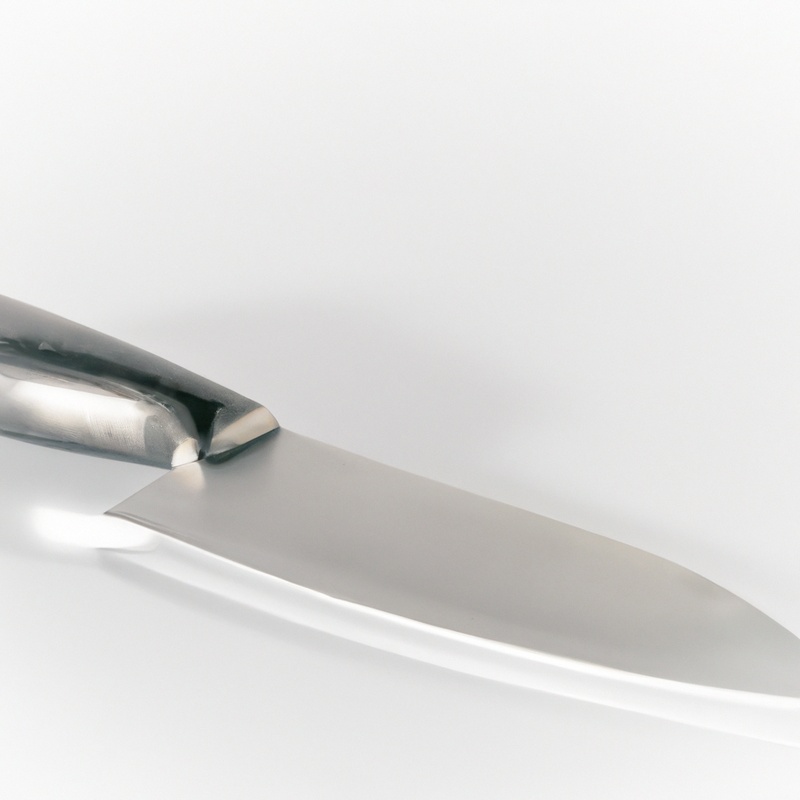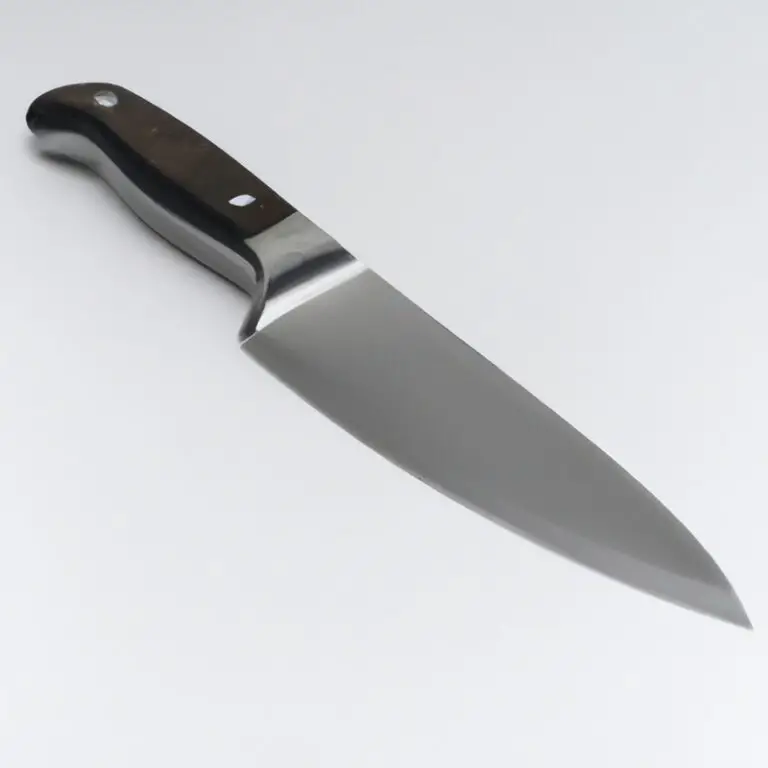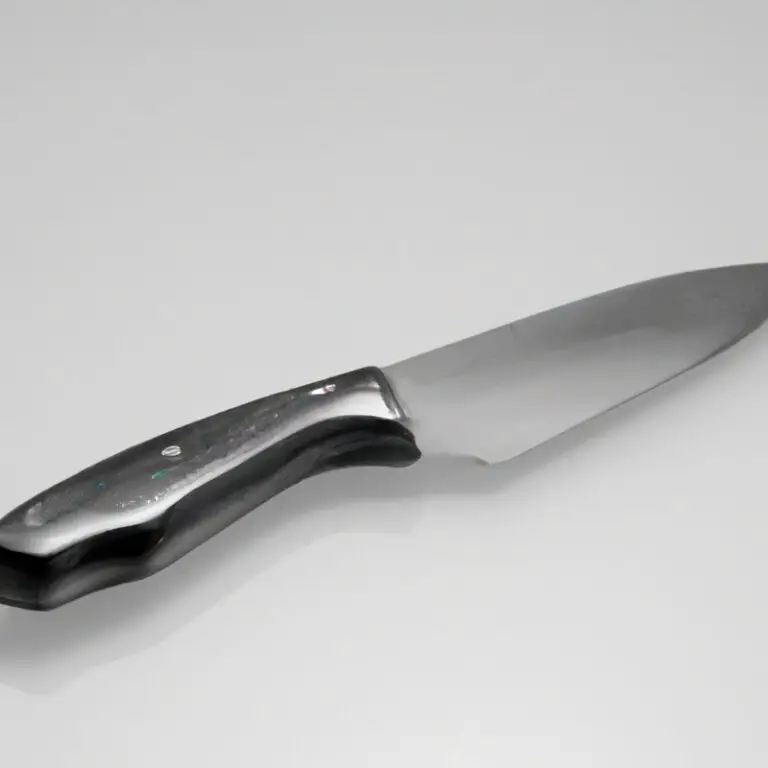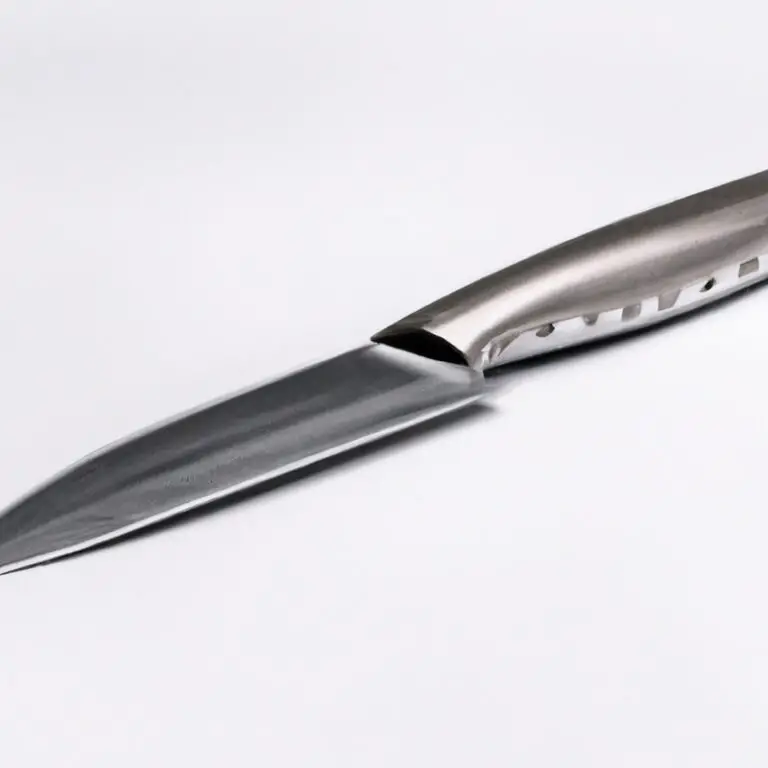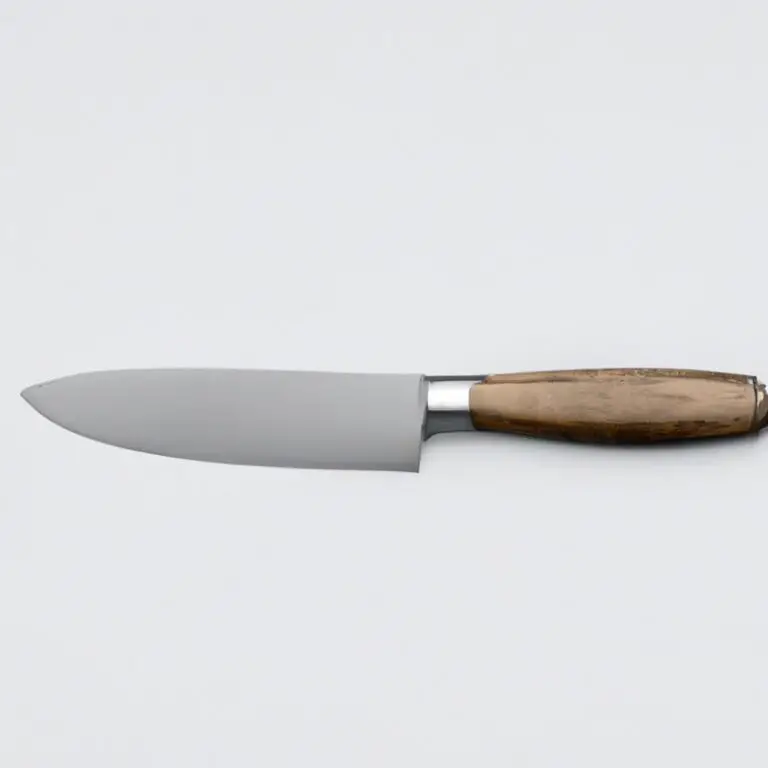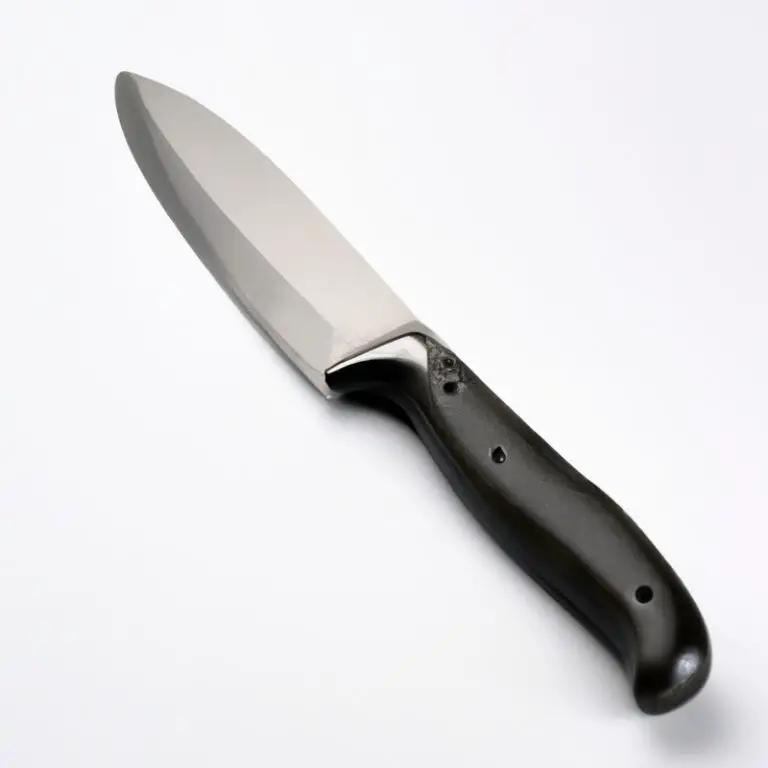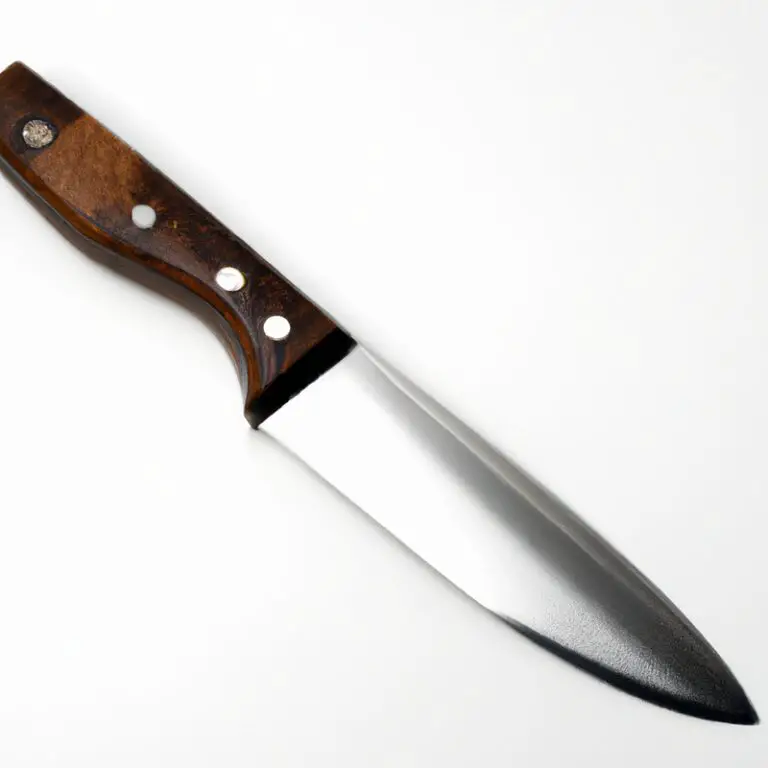Can I Use a Paring Knife To Slice Small Cuts Of Meat, Like Chicken Breasts? Easily!
Key Takeaways:
- Yes, a paring knife can be used to slice small cuts of meat, such as chicken breasts, but it may not be the most efficient or safe option.
- It is highly recommended to use a sharp and sturdy chef’s knife or utility knife instead of a paring knife to ensure smooth and precise cuts.
- Always handle knives with care, keep them sharp, and follow proper cutting techniques for optimal safety and efficiency in the kitchen.
- Investing in a high-quality set of knives can make a significant difference in the quality of your cooking and overall kitchen experience.
Slicing chicken breasts or any small cuts of meat can be a daunting task, especially when using the wrong type of knife. While most people believe that they need a specialized knife to achieve perfect slices, it might surprise you to know the versatility of a common kitchen tool – the paring knife.
As a seasoned chef with years of experience, I can tell you that a paring knife can do wonders in the kitchen if used correctly.
In this article, we’ll dive into the world of paring knives to explore their capabilities, advantages, disadvantages, and tips for slicing chicken breasts effortlessly.
| Question | Answer |
|---|---|
| What is a paring knife? | A small knife with a short blade typically used for peeling and carving fruits and vegetables. |
| Can a paring knife be used for slicing meat? | Yes, it can be used for slicing small cuts of meat, but it’s not the most efficient choice. |
| Why is a paring knife not the best option for slicing meat? | While a paring knife can be sharp, its short blade length and thinness may not be suitable for cutting through denser meat, leading to uneven cuts and a longer overall process. |
| What type of knife is better for slicing meat? | A chef’s knife or slicing knife would be a more suitable option for slicing meat due to their longer and thicker blades that can handle denser cuts of meats more efficiently. |
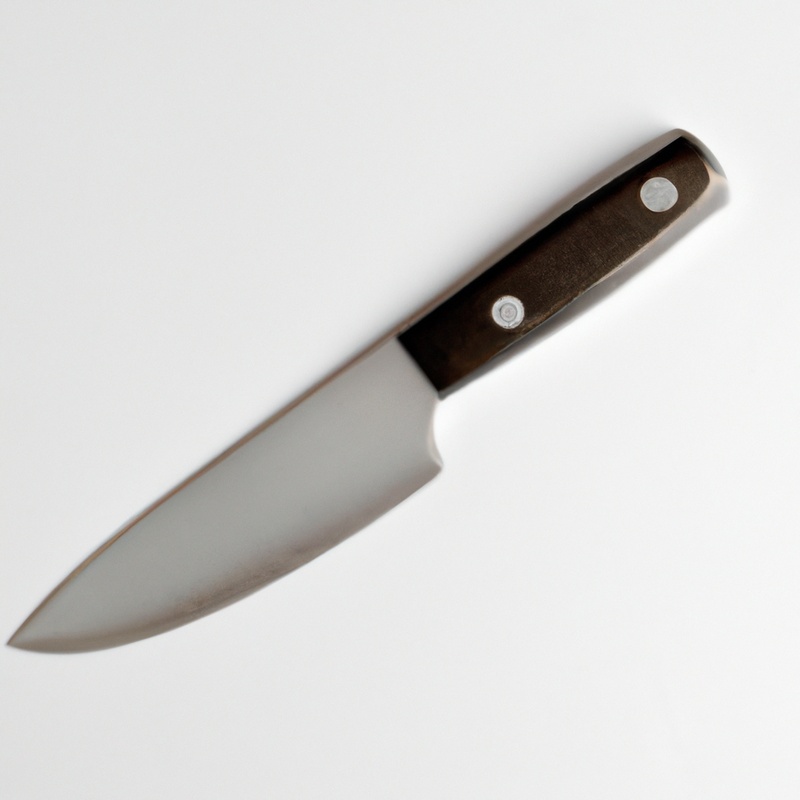
Understanding the Paring Knife
Understanding the Paring Knife: A paring knife is a small, sharp blade with a pointed tip and a straight or slightly curved edge. It is commonly used for intricate tasks such as peeling, trimming, and slicing small fruits and vegetables.
However, a paring knife can also be used for slicing small cuts of meat like chicken breasts.
When selecting a paring knife, look for a blade that is sturdy and well-balanced, with a comfortable handle. Keep in mind that not all paring knives are the same.
Some are better suited for specific tasks, so choose one that meets your specific cutting needs.
Using a paring knife to slice chicken breasts requires some skill and technique. It’s essential to ensure the knife is sharp and stable, and the chicken is held securely in place while cutting.
It’s recommended to slice the chicken breasts against the grain to ensure tenderness.
When using a paring knife, always exercise safety precautions, such as keeping the blade away from your body and using a cutting board that provides stability and prevents slipping. It’s also important to maintain and sharpen your paring knife regularly to ensure optimal performance and longevity.
Overall, a paring knife can be an effective tool for slicing small cuts of meat when used correctly.
However, there may be alternative knives better suited for the task, such as a chef’s knife or a carving knife.
Types of Cuts Possible with a Paring Knife
A paring knife is a versatile tool that can be used for various small and intricate food preparations, including slicing small cuts of meat such as chicken breasts. Some of the types of cuts possible with a paring knife are as follows:
- Thin Slicing – Perfect for slicing thin cutlets or delicate meat pieces such as chicken or fish.
- Peeling – The pointed tip of the paring knife makes it easy to peel the skin off fruits and vegetables.
- Precision Cutting – The small and sharp blade of the paring knife enables you to make precise cuts such as trimming away unwanted fat or removing small bones from meat.
- Garnish Cutting – The paring knife is an ideal tool for carving out decorative garnishes such as radish roses, small melon balls, or apple shapes.
- Detailing – The narrow and pointed blade allows for detailed cuts such as scoring meat to allow marinades to penetrate or cutting small notches for a decorative pattern.
Overall, a paring knife can perform various tasks when it comes to cutting small cuts of meat such as chicken breasts. However, it’s essential to ensure that the blade is sharp enough and of high quality to achieve the desired results.
Factors to Consider for Slicing Small Cuts of Meat
When slicing small cuts of meat like chicken breasts, there are several factors you should consider for the best results. Firstly, the sharpness of the knife is crucial for clean and even cuts.
Secondly, the technique you use, such as the angle and pressure, affects the outcome of the cut.
Thirdly, the size and shape of the meat piece also play a role in the slicing process. Finally, the type of knife you use and its size should match the task at hand.
By considering these factors, you can achieve accurate and precise slices that make your cooking experience more enjoyable.
Advantages and Disadvantages of Using a Paring Knife
Advantages of Using a Paring Knife:
- Paring knives are small and nimble, offering greater control and precision while cutting smaller items like chicken breasts.
- They are designed to peel fruits and vegetables, trim meats, and perform other small tasks, making them a versatile addition to any kitchen.
- Paring knives are typically more affordable than larger knives, making them an accessible option for those on a budget.
Disadvantages of Using a Paring Knife:
- Paring knives are not designed for heavy-duty slicing or chopping tasks, and may not be suitable for cutting larger cuts of meat or dense vegetables.
- They have a shorter blade than larger knives, meaning that they may take longer to complete larger cutting tasks.
- The smaller size of the knife may make it more difficult for those with larger hands to use comfortably.
Tips for Slicing Chicken Breasts with a Paring Knife
Here are some tips for slicing chicken breasts with a paring knife:
- Use a sharp paring knife to slice through the chicken breast easily and avoid tearing the meat.
- Try to slice the chicken breast into even portions to ensure proper cooking.
- Cut against the grain of the chicken breast to make each slice tender and juicy.
- Use a cutting board that is stable and non-slip to prevent accidents.
- Slice the chicken breast at a 45-degree angle to make the slices appear elegant and uniform.
- Use a fork to hold the chicken breast in place while you slice for added stability.
By following these tips, you can slice chicken breasts with a paring knife like a pro!
Common Mistakes to Avoid When Using a Paring Knife
Common Mistakes to Avoid When Using a Paring Knife:
- Applying too much pressure while cutting can result in loss of control and cause injury. Use a gentle, balanced grip and let the sharp blade of the knife do the work.
- Cutting in a back and forth motion can result in uneven cuts and can be dangerous. Use a sharp, smooth slicing motion to ensure a clean cut.
- Using a dull or damaged knife can make it difficult to slice through the meat, resulting in uneven cuts and potentially dangerous slips. Always use a sharp and well-maintained paring knife.
- Cutting against the grain can cause the meat to become tough and unpleasant to eat. Always identify the direction of the grain and cut parallel to it to ensure tender, flavorful meat.
- Cutting with a dirty knife can contaminate the meat, leading to foodborne illness. Always wash and sanitize your paring knife before and after use.
By avoiding these common mistakes, you can effectively use a paring knife to slice small cuts of meat like chicken breasts. Always prioritize safety and clean, precise cuts for the best results.
Safety Precautions When Using a Paring Knife
When handling a paring knife, safety should be a top priority to avoid injuries. Here are some safety precautions to keep in mind when using a paring knife to slice small cuts of meat:
- Use a sharp knife: A dull knife requires more force, increasing the chances of losing control and causing injury. Keep your paring knife sharp for effortless and safe slicing.
- Use a cutting board: Never hold the meat in your hand while slicing; it’s a recipe for disaster. Use a stable cutting board to hold the meat in place and prevent the knife from slipping.
- Watch your fingers: Keep your fingers away from the blade’s path to avoid accidents. Hold the meat securely, making sure your fingers are out of harm’s way.
- Cut away from your body: Always cut away from your body to avoid accidentally cutting yourself. Also, avoid twisting the blade while cutting.
- Store the knife safely: When not in use, store the paring knife in a safe place such as a knife block. Never leave the knife on the counter or in the sink where it can cause injury to someone.
By following these safety tips, you can effectively use your paring knife to slice small cuts of meat without getting hurt.
Alternatives for Slicing Small Cuts of Meat
While a paring knife can be a useful tool for slicing small cuts of meat, there are alternatives that may be better suited for the task. Here are some alternatives to consider:
- Chef’s Knife: A chef’s knife has a longer blade that can easily handle slicing through small cuts of meat like chicken breasts. It also provides more control and precision than a paring knife.
- Serrated Knife: A serrated knife is designed to saw through tough or crusty surfaces, making it a good option for slicing through chicken skin or tougher cuts of meat.
- Cleaver: A cleaver is a large, heavy knife that can handle slicing through large pieces of meat but can also be used for smaller cuts. It can provide a clean, precise cut if used correctly.
- Electric Knife: An electric knife can make slicing small cuts of meat quick and easy. It has two blades that move back and forth, making clean and consistent cuts.
When choosing an alternative to a paring knife for slicing small cuts of meat, consider the type of meat, the thickness of the cut, and your personal preference. It’s important to choose the right tool for the task to ensure safety and a successful outcome.
Maintaining and Sharpening Your Paring Knife
To maintain and sharpen your paring knife, make sure to wash it by hand and dry it immediately after use. Avoid washing it in a dishwasher as it may dull the blade.
To sharpen the knife, use a honing steel regularly or invest in a sharpening stone.
Hold the blade at a 22-degree angle and run it against the honing steel or stone, 4-5 times on each side. If the blade is excessively dull, use a sharpening stone to sharpen the blade, holding it at a 20-degree angle and running it along the stone until sharp.
Be sure to keep the blade lubricated with water or oil while sharpening.
Regular maintenance and sharpening of your paring knife will prolong its lifespan and ensure that it remains a reliable tool for slicing small cuts of meat like chicken breasts.
Choosing the Right Knife for Your Cutting Needs
Choosing the right knife for your cutting needs is crucial for efficient and safe food preparation. When selecting a knife, consider the type of food you plan to cut and the cutting technique required.
A paring knife is ideal for delicate work, such as peeling, coring, and detailed cutting of fruits and vegetables.
However, it may not be the best choice for slicing small cuts of meat. For that, consider a more substantial blade, such as a chef’s knife or a slicing knife.
These knives allow for more efficient cutting and better precision for meat carving.
Additionally, when purchasing a knife, make sure to choose a reputable brand and seek advice from a professional to ensure you are purchasing a knife that fits your specific needs and budget.
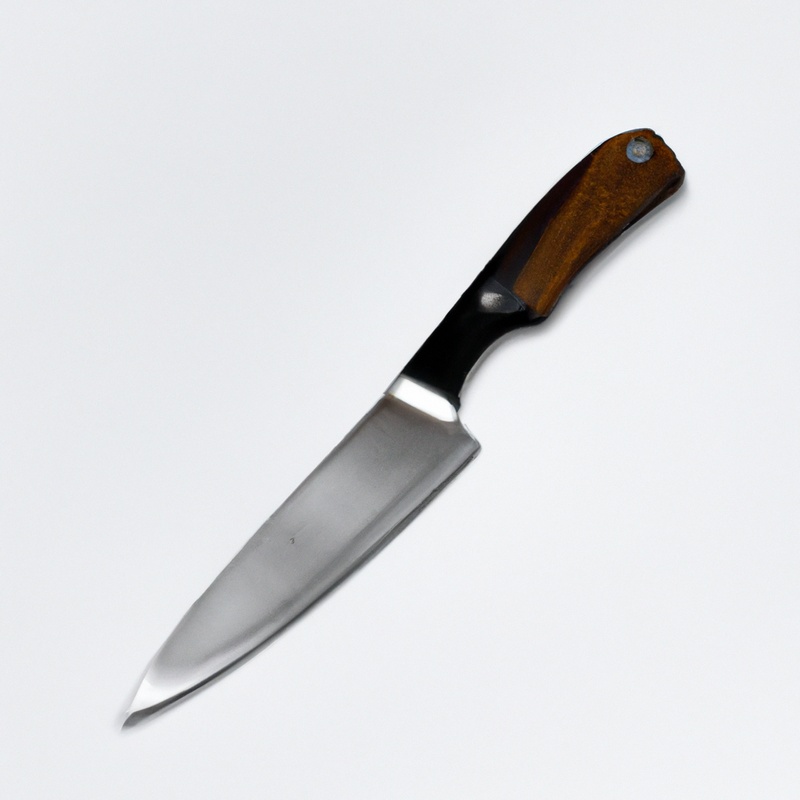
Final Verdict
A paring knife can be a reliable tool for slicing small cuts of meat like chicken breasts, but there are certain factors to keep in mind in order to achieve clean and precise cuts. Remember to maintain and sharpen your paring knife regularly, and to practice safety precautions while handling it.
While there are alternatives to a paring knife for meat slicing, understanding the types of cuts possible with this versatile tool can lead to more efficient and enjoyable cooking experiences.
By choosing the right knife for your cutting needs and avoiding common mistakes, you can elevate your culinary skills and become more confident in the kitchen. Trust the information presented in this article and apply these practical tips to unleash your inner chef.
Happy cooking!

